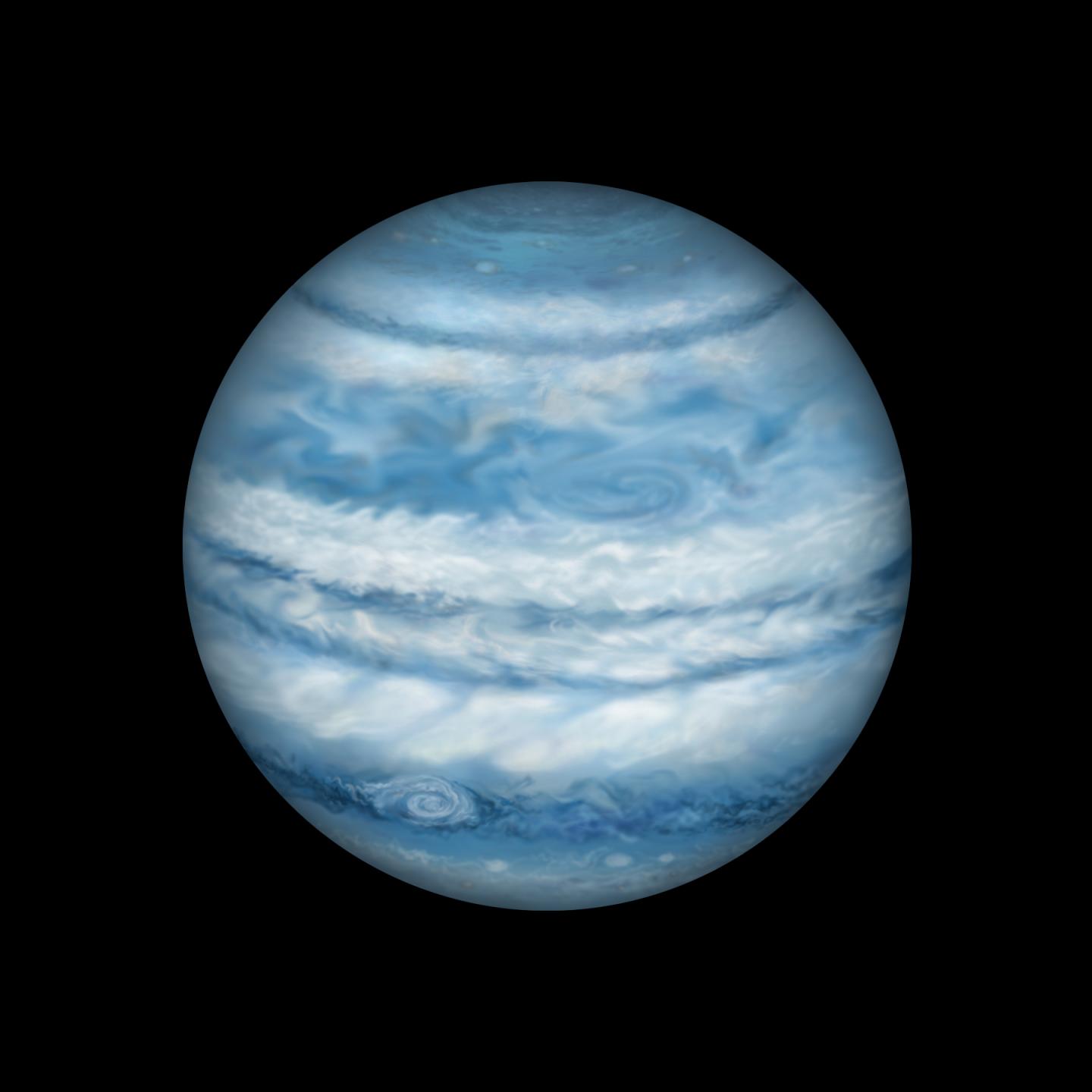

This is an artist's rendering of the planet Kepler-1647b.
Credit: Lynette Cook
San Francisco State University astronomer Stephen Kane is among a team of researchers who have discovered a new planet that orbits two suns simultaneously. The discovery was announced today at a meeting of the American Astronomical Society in San Diego.
With a mass and radius nearly identical to that of Jupiter, the planet, Kepler-1647b, is the largest circumbinary planet — a planet that orbits two stars — ever discovered. Located in the direction of the constellation Cygnus, Kepler-1647b is 3,700 light-years away from Earth and approximately 4.4 billion years old, roughly Earth's age. The stars it orbits are similar in size to our Sun, and it also has the largest orbit of any circumbinary planet ever found, taking roughly three Earth-years to orbit its host stars.
The team that discovered the new planet used data from the Kepler telescope and includes astronomers from NASA's Goddard Space Flight Center and San Diego State University. Laurance Doyle, an astronomer at the SETI Institute, first noticed its transit past the suns in 2011, however more data and several years of analysis were needed to confirm the transit was caused by a circumbinary planet.
Kane, an associate professor of astrophysics at SF State and co-author of the discovery paper, currently serves as chair of the Kepler Habitable Zone Working Group. “During the lifetime of the Kepler Mission, we've only had a handful of opportunities to see the moments when this planet could align and block out the light from both stars, so the fact that we've found anything at all is pretty amazing,” Kane said. “We weren't expecting to find anything like [Kepler-1647b], with such a long orbital period because those kinds of planets tend to fall through the cracks, but when we saw more than one transit and realized that this is the real deal, it was very exciting discovery to make.”
Though Kane says Kepler-1647b's massive orbit places the planet within the “habitable zone” of its stars, meaning its proximity to its suns is fitting for liquid water to exist on the planetary body's surface, it is believed that the planet is a gas giant and unfit to support life. “It's as if you took Jupiter and placed it in Earth's orbit,” Kane explained.
Kane and a student assistant have already begun working on calculations to try and estimate the possibility and frequency of moons orbiting giant planets like Kepler-1647b to see how likely it could be for one of those moons to not only exist, but be capable of supporting life as well. “You really have to be Johnny-on-the-spot with these types of experiments to have a chance of making significant finds,” Kane said. “Hopefully [finding Kepler-1647b] is a sign of many more of these kinds of discoveries to come.”
The research for this planetary discovery has been accepted for publication in The Astrophysical Journal with Veselin Kostov, a NASA Goddard postdoctoral fellow, as lead author.












